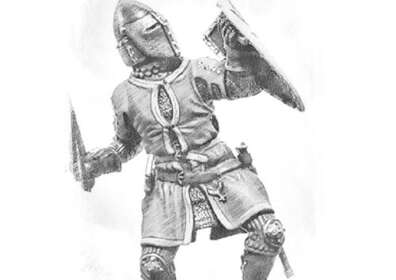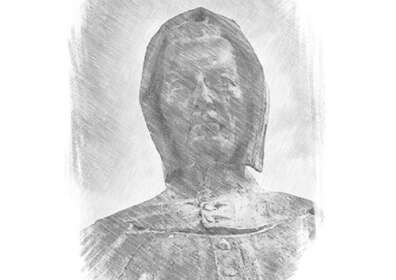MAGHINARDO PAGANI (1250 ca.-27 agosto 1302)

“Le città di Lamone e di Santerno
conduce il lioncel dal nido bianco
che muta parte dalla state al verno”
(Inf., XXVII, vv. 49-51)
“Ben faranno i Pagan, da che ‘l demonio
lor sen girà; ma non però che puro
già mai rimagna d’essi testimonio”
(Purg. XIV vv. 118-120)
Maghinardo Pagani was the son of Diana di Azzo della Pila Ubaldini, of the Montaccianico branch of the family, and of the noble Ghibelline Pietro di Pagano, from whom she inherited extensive land in the upper Lamone, Senio and Santerno valleys.
Maghinardo was an undisputed protagonist of the political and military events of Romagna in the last quarter of the 13th century, a Ghibelline in Romagna and a Guelph in Tuscany, Dante called him “the Lioncel of the white lair, /Who changes sides ’twixt summer-time and winter” (Inferno, Canto 17) in reference to the family coat of arms which depicts an azure lion in a white field.
The Pagani “devil” (Purgatory Canto14) married Mengarda della Tosa in 1282 and joined the Black Guelphs, who were supporters of Boniface VIII. In 1289 he was with Dante and the Guelph League at the battle of Campaldino fighting against the Ghibellines. Thanks to the Pope and his ties with Florence, he became Lord of Imola and Forlì.
Maghinardo Pagani was the Lord of the ROCCA di CASTELLONCHIO fortress which still dominates Marradiand the entire valley. In 1279 this castle was damaged by a terrible earthquake which also killed Maghinardo’s cousin.
In Brisighella (from the Celtic brix, “stoney site, peak, highland”), Maghinardo built a castle in 1290 (where today we find the 19th century Torre dell’Orologio). This unconquerable war nest made Brisighella a strategic location between Romagna and Tuscany.
Moreover, Maghinardo implemented the defensive structure of Gamberaldi, a crucial point of his fief along the boundary between the Senio and Lamone valleys. At his death the land passed into the hands of his brother Ugolino and, therefore, the Ubaldini who, in 1362, surrendered it to Florence.
At the height of his power, the master of a small Signoria, Maghinardo died in his castle in Benclaro (August 27, 1302) shortly after drawing up a will that stated: “I chose as my burial ground, and wish for my body to be buried in the Santa Maria di Rio Cesare church and monastery according to the custom, and I wish to don the habit of the Vallumbrosan order and no other.”
The actual site of the tomb is unknown, but legend has it that it is touched by a ray of sunlight once a year during the spring equinox.
Photo credits: Maghinardo Pagani da Susinana_Pegaso Models per MuFiS – Museo del Figurino Storico Calenzano (FI)




